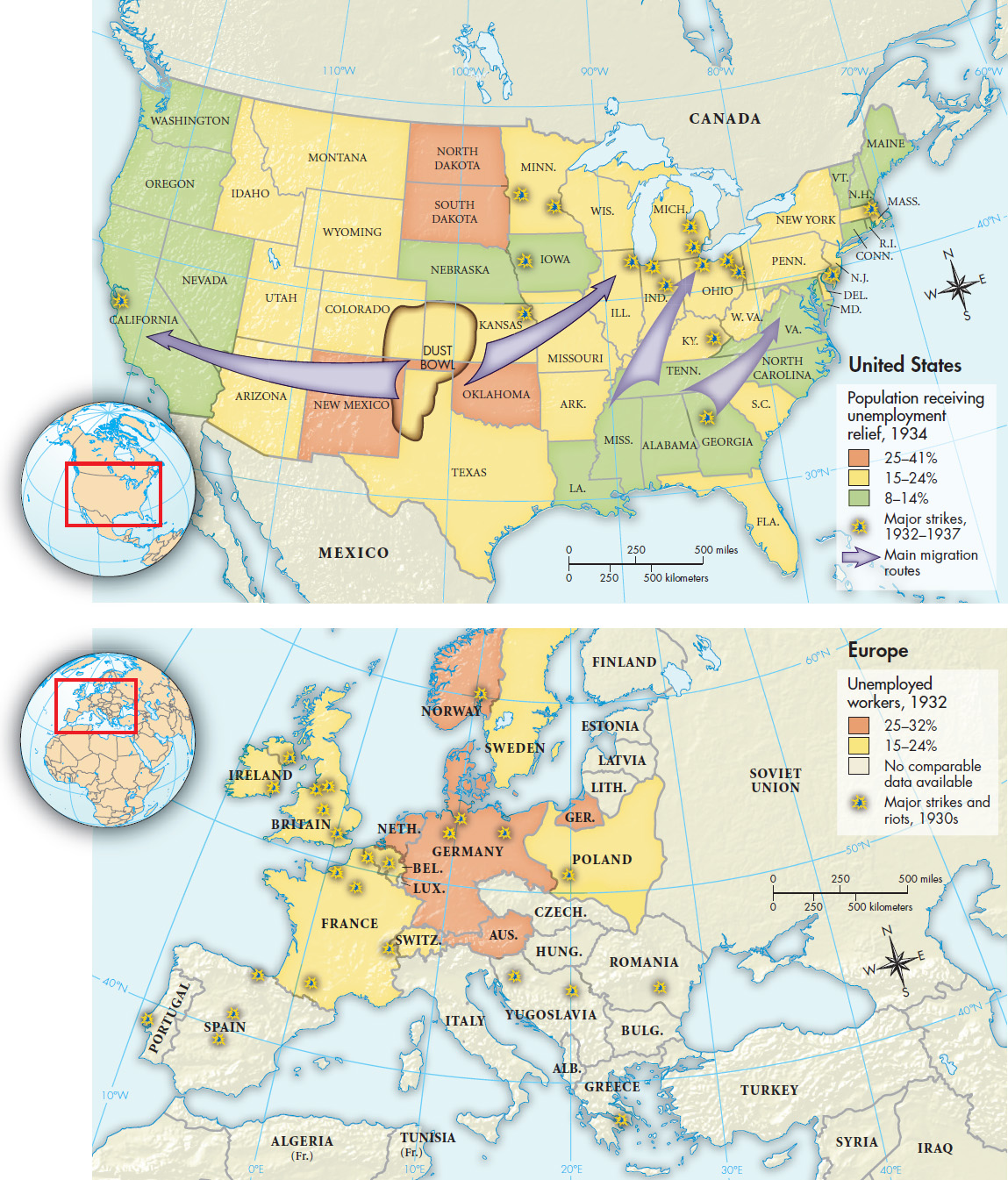A History of Western Society: Printed Page 885
A History of Western Society, Value Edition: Printed Page 892
The Great Depression, 1929–1939
What were the causes and consequences of the Great Depression?
This fragile optimism was short-lived. Beginning in 1929, a massive economic downturn struck the entire world with ever-greater intensity. Recovery was slow and uneven, and contemporaries labeled the economic crisis the Great Depression, to emphasize its severity and duration. Only with the Second World War did the depression disappear in much of the world.
The social and political consequences of the Great Depression were enormous. Mass unemployment and failing farms made insecurity and unemployment a reality for millions of people (Map 26.1). In Europe and the United States, governments instituted a variety of social welfare programs intended to manage the crisis. Yet the prolonged economic collapse shattered the fragile political stability of the mid-1920s and encouraged the growth of extremists on both ends of the political spectrum. Democratic government faltered, and authoritarian Fascist parties gained power across Europe.

MAPPING THE PAST
ANALYZING THE MAP Which European countries had the highest rate of unemployment? How do the rates of people on unemployment relief in the United States compare to the percentage of unemployed workers in Europe? In the United States, what were the main channels of migration?
CONNECTIONS What tactics of reform and recovery did European nations use to combat the deprivations of the Great Depression?